Joe Louis Greenway FAQs
Joe Louis was a boxing legend and a proud Detroiter. His significance as an American hero and icon cannot be overstated. Although he’s become a prominent cultural symbol in our city, many people are unaware of the important role he played as an advocate for social justice. Joe Louis worked tirelessly to advocate for the rights of Black Americans and to promote social justice in the United States. The Joe Louis Greenway is more than a tribute to his legacy. It celebrates Joe Louis as a role model, as someone whose values can guide this project and the people it brings together.
“My gift was fighting and through fighting I was to uplift the spirit of my race.” Joe Louis.
- A Greenway is an outdoor recreational path connecting people & places. Each greenway is unique, reflecting the character of the communities it connects.
- An Urban Greenway is defined as “a landscaped and traffic-calmed pathways with a mix of bicycle facilities and other streetscape improvements that link open spaces, parks, public facilities, and neighborhood centers together. Greenways support a variety of active travel uses, including walking, running, bicycling, and skating.” (Ngo et al. 2018)
Urban greenways and parks play a vital role in the social, economic and physical well-being of American cities and their residents. In addition to improving the mental and physical health of adults and children through increased access to recreational opportunities, greenways generate economic value. Connected open space networks attract non-resident visitors who put new dollars into local economies—the value of these spaces brought into even further relief by the impacts of COVID-19.
The City Detroit has multiple greenways: the Conner Creek Greenway, Dennis Archer Greenway, Dequindre Cut, Fitzgerald Greenway, and RiverWalk. Below are two examples:
1. The Dennis Archer Greenway is a 1.2-mile greenway that runs from the Detroit Riverwalk to East Vernor Highway, connecting more neighborhoods safely to Detroit’s riverfront.
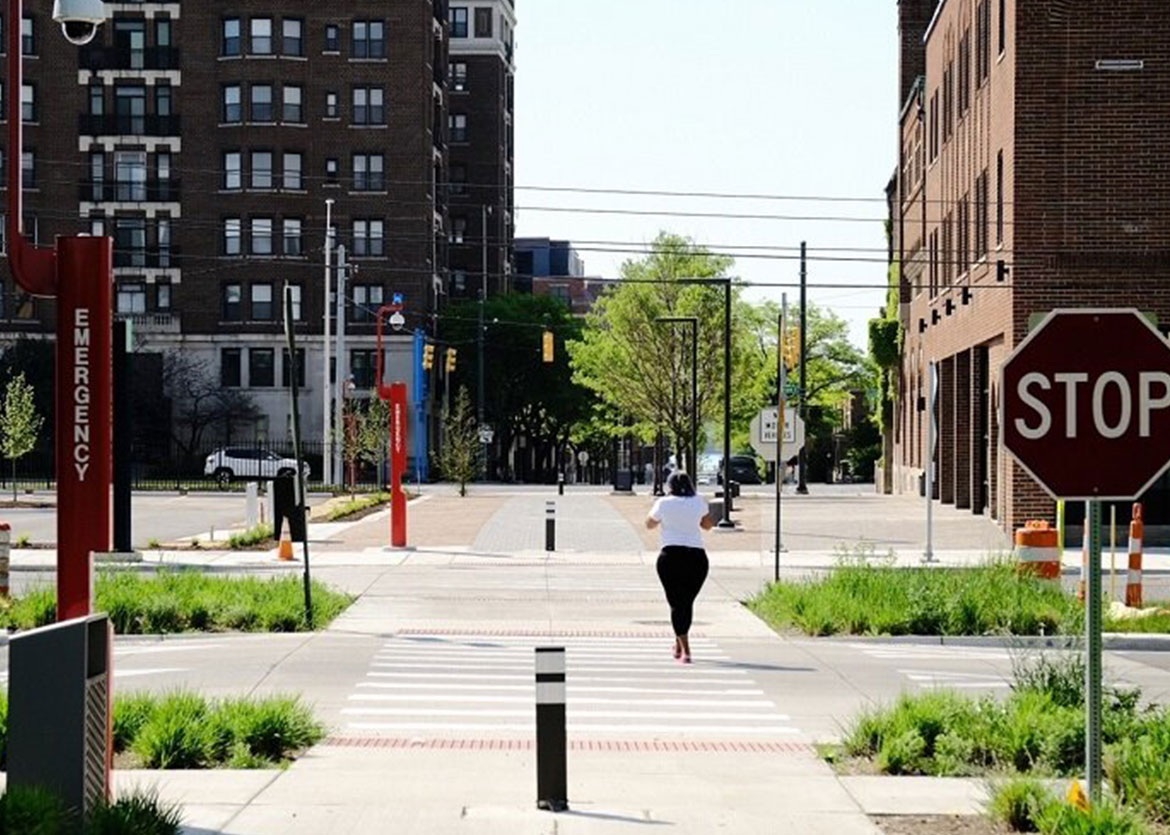
2. The Dequindre Cut Greenway is an urban recreational path that opened to the public in May of 2009. The two-mile greenway was developed through a public, nonprofit and private partnership and offers a pedestrian link between the East Riverfront, Eastern Market and several residential neighborhoods in between.
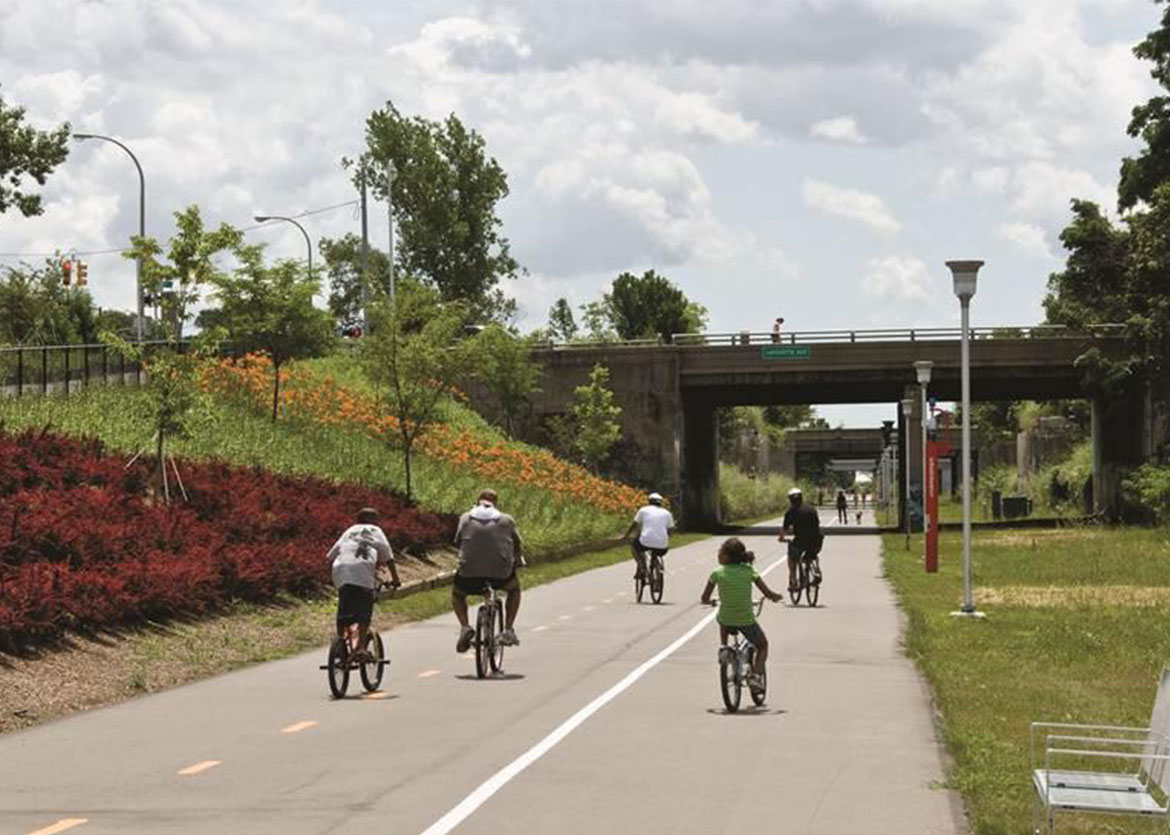
Yes, and the JLG builds on lessons from other US cities.
The Atlanta Beltline has spurred over $7B in economic development over 22 mile loop (33 miles of trail in total). Estimated 50,000 one year construction jobs, 23,300 permanent jobs through 2019 https://beltline.org/flipbook/2020-annual-report/
Home prices on western portion of Chicago 606 have risen 350% since 2014
The 606 is an urban greenway project in Chicago. The 606 is a converted abandoned rail corridor, formerly known as the Bloomingdale Line. Since 2012, the 606 has had a catalytic impact on surrounding communities, and a dramatic spiral upward in the housing market. Read more here: https://www.housingstudies.org/releases/measuring-impact-606/
The Indianapolis Cultural Trail. An eight-mile world class urban bike and pedestrian path in downtown Indianapolis, Indiana. The Indianapolis Cultural Trail seamlessly connects neighborhoods, cultural districts and entertainment amenities while serving as the downtown hub for central Indiana’s vast greenway system. https://indyculturaltrail.org
The Hudson River Greenway in New York City. The greenway is separated from traffic and runs through a series of parks along the Hudson River and the west side of Manhattan, offering beautiful views of the water and skyline along its two-lane, 12.9-mile paved path. Signals and directional signage are prevalent to ensure safe interactions between cars, bikes and pedestrians. https://www.traillink.com/trail/hudson-river-greenway
The greenway will connect the existing Riverwalk and Dequindre Cut. The full loop will run through 23 different Detroit neighborhoods and connect to the cities of Dearborn, Highland Park, and Hamtramck. Upon completion, 40,000+ residents will be able to walk to the pathway within 10 minutes. Check out the map to see if you live near the planned route.

The public engagement strategy was and is instrumental in developing the framework plan and the continuous planning taking place for all segments. The strategy responded to both the current conditions as well as the future vision Detroit residents want to see. The strategy for public engagement focused on promoting active participation and co-design activities throughout the framework planning process.These strategies sought to reach beyond surface-level desires and concerns to articulate and address fears, hopes and dreams that are more difficult to articulate. Each of the sessions were designed to provide a variety of opportunities for resident engagement and input through participatory design activities, guided discussions, storytelling sessions, panel discussions, surveys, feedback cards and informational boards. Most importantly, the community engagement strategy remained flexible and adaptable throughout the process in order to respond thematically to community desires and concerns. While close attention was paid to data collection and evaluation of feedback, the framework plan was directly shaped and guided at every step by residents and stakeholders who live, work and play along the Joe Louis Greenway route.
The engagement strategy also includes a Citizen Advisory Council (“CAC”), composed of eight community members—one individual from of the five Detroit Council Districts connected by the greenway, as well as representatives from Hamtramck, Highland Park and Dearborn. These community leaders were selected based on their advocacy in the community and deep connections to other residents, as well as their interest in non-motorized transportation and green space. These volunteers committed to the long-term investment and participation in the Joe Louis Greenway—from planning and design, through implementation and maintenance.
In addition to the Joe Louis Greenway meetings, GSD staff shared information and collected feedback at an additional 44 meetings and events, as requested by community members or city leaders. These meetings included small block club meetings, festivals, and Department of Neighborhood Meetings.
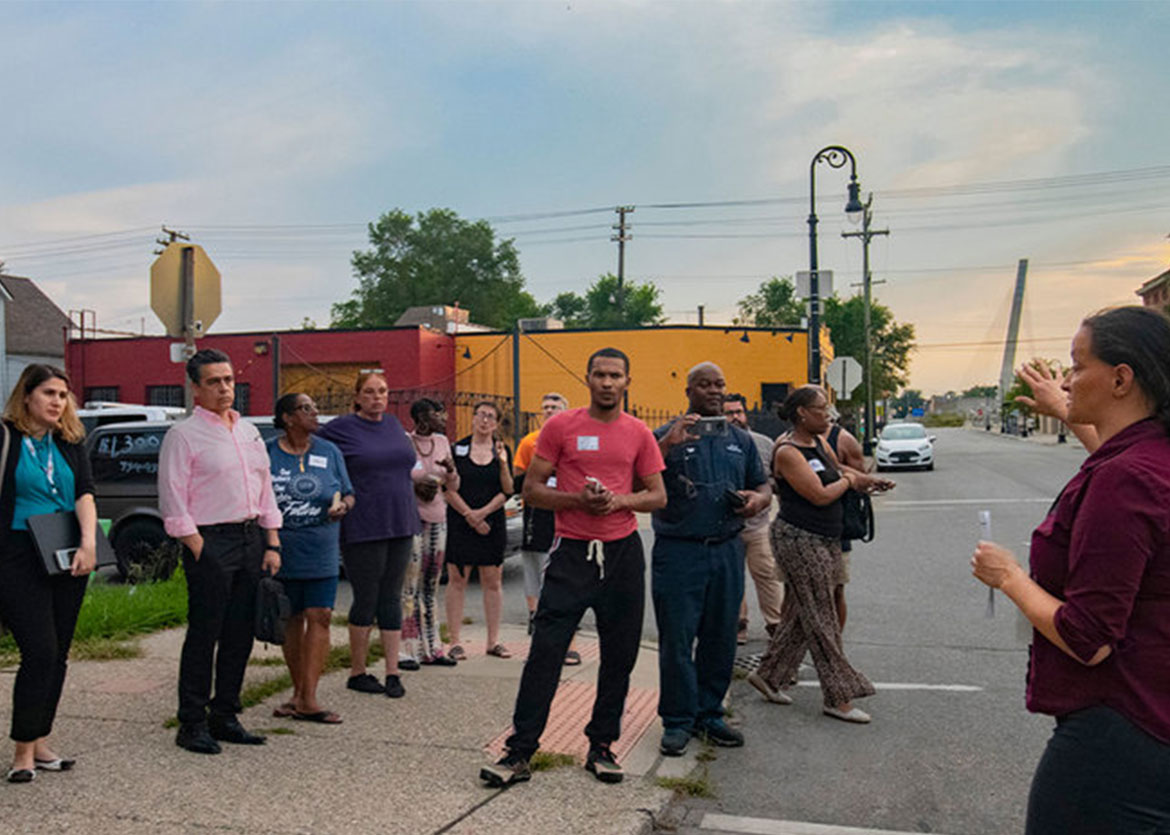

Children learning to ride their bikes, senior walking groups, commuters on electric scooters, people using wheelchairs, people walking dogs—these are just some of the many ways people will enjoy the Joe Louis Greenway. The pathway will allow for different users including:
- Dedicated pedestrian path for slower users
- Clear zone on edge of bike path for runners and joggers
- Bike path for high-speed uses such as bikes and scooters
Safety is a top priority for residents and neighborhoods. In consultation with the Detroit Riverfront Conservancy and Detroit Police Department, there are a few essential safety elements on the greenway including:
Lighting
- Call boxes with cameras located ~250’ apart
- Cameras at entrances at road crossings
- Cameras in parking lots
Detroit Riverfront Conservancy
Invest Detroit
Gilbert Family Foundation
Wilson Foundation
Community Foundation of Southeast Michigan
CEO Group
Rocket Community Fund
Davidson Foundation
Eastern Market Partnership
Focus Hope
Bloomberg Associates
- Create long-term economic driver/anchor in neighborhoods
- Beautify city neighborhoods and remove eyesores
- Connect residents, neighborhoods, and regional communities
- Linking 21 trails that span 7 counties
- Connecting 23 Detroit neighborhoods
- Establish a city-wide focal point for micro-enterprise and small business growth
- 14,000 Detroit households (46,000 Detroiters) will have 10 minute walking access
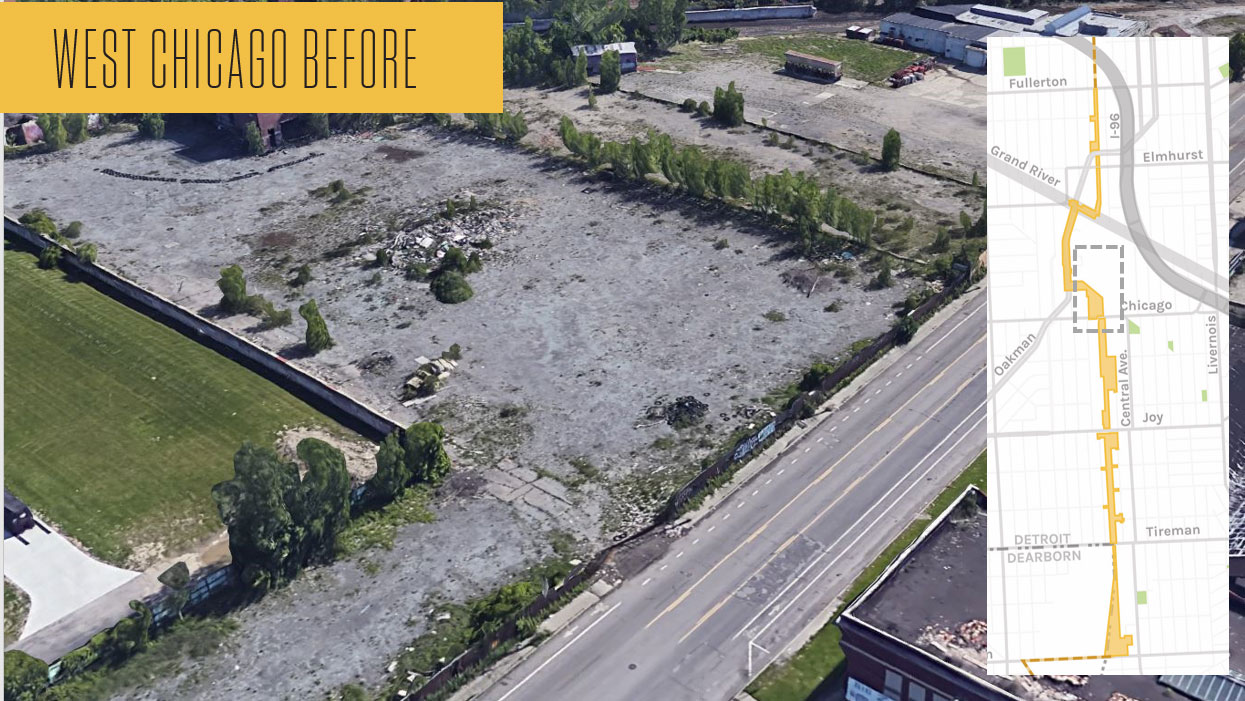
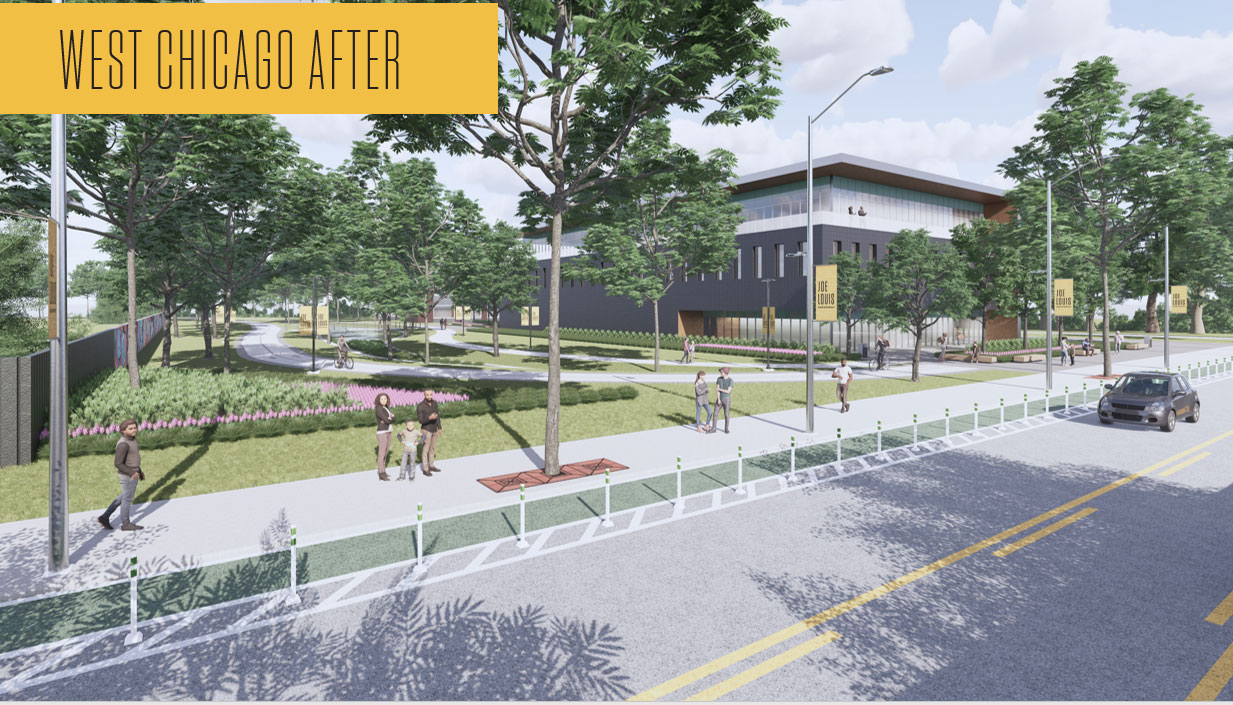
- Reduce blight and demolition of non-salvageable properties
- Create new nodes for communities to gather and flourish
- Stabilize homeownership by ensuring existing residents can continue to afford to live in their homes and benefit from homeownership resources.
- Preserve existing affordable housing
- Set stage for future growth and new development including job training and career opportunities
- Procure light industrial development real estate opportunities
- Implement workforce development strategy for construction and operations
- Opportunity to “do this right from the start”
- A catalytic project such as the Joe Louis Greenway will add value to your home and neighborhood, including a potential increase in property taxes. However, it’s important to keep in mind that homeowners are protected against large property tax increases. Under state law, the annual increase in property taxes is capped at 5% or more than the Consumer Price Index (CPI),, as long as ownership has not changed. When a home sells, the cap is lifted and the taxable amount adjusts to the State Equalized Value the year following the transfer. To learn more, click HERE to watch a Property Taxes Presentation hosted by our team and the Office of the Assessor.
- The City of Detroit has access to and is exploring a range of tools that will be deployed in conjunction with the implementation of the Joe Louis Greenway to achieve wealth building and affordability objectives. Visit the City of Detroit webpage to learn more about property tax assessments and resources: detroitmi.gov/departments/office-chief-financial-officer/ocfo-divisions/office-assessor/
Currently, the construction of the pathway is slated to be completed in 5 to 10 years, dependent on fundraising efforts. Additional amenities, programming, art, will be planned and developed in the years after it is fully constructed.
- Stay informed by subscribing to the JLG newsletter: bit.ly/subscribe2JLG
- Attend community meetings. Upcoming meeting notices are posted on the website and facebook page.
- Sign up to be a Greenway steward. Email us with your information and interest.
- Contact the team to share your input. Email: [email protected]